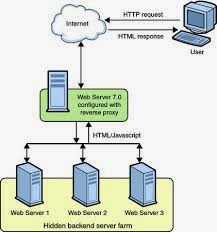The shutdown command is a Command Prompt command that can be used to shut down, restart, log off, or hibernate your own computer.
The shutdown command can also be used to remotely shut down or restart a computer you have access to over a network.
 Shutdown Command Syntax:
Shutdown Command Syntax:
shutdown [/i | /l | /s | /r | /g | /a | /p | /h | /e |/o] [/hybrid] [/f] [/m \\computer-name] [/t xxx] [/d[p:|u:]xx:yy] [/c "comment"] [/?]
How To Read Command Syntax if you're not sure how to read the shutdown command syntax shown above.
/i = This shutdown option shows the Remote Shutdown Dialog, a graphical version of the remote shut down and restart features available in the shutdown command. The /i switch must be the first switch shown and all other options will be ignored.
/l = This option will immediately log off the current user on the current machine. You can not use the /l option with the /m option to log off a remote computer. The /d, /t, and /c options are also not available with /l.
/s = Use this option with the shutdown command to shut down the local or /m defined remote computer.
/r = This option will shut down and then restart the local computer or the remote computer specified in /m.
/g = This shutdown option functions the same as the /r option but will also restart any registered applications after the reboot.
/a = Use this option to stop a pending shut down or restart. Remember to use the /m option if you're planning on stopping a pending shut down or restart that you executed for a remote computer.
/p = This shutdown command option turns off the local computer completely. Using the /poption is similar to executing shutdown /s /f /t 0. You can not use this option with /t.
/h = Executing the shutdown command with this option immediately puts the computer you're on into hibernation. You can not use the /h option with the /m option to put a remote computer into hibernation, nor can you use this option with /t, /d, or /c.
/e = This option enables documentation for an unexpected shut down in the Shutdown Event Tracker.
/o = Use this shutdown switch to end the current Windows session and open the Advanced Boot Options menu. This option must be used with /r. The/o switch is new beginning in Windows 8.
/hybrid = This option performs a shutdown and prepares the computer for fast start up. The /hybrid switch is new beginning in Windows 8.
/f = This option forces running programs to close without warning. Except with the /l, /p, and /h options, not using shutdown's /f option will present a warning about the pending shut down or restart.
/m \\ computer-name = This shutdown command option specifies the remote computer that you want to execute a shut down or restart on.
/t xxx = This is the time, in seconds, between the execution of the shutdown command and the actual shut down or restart. The time can be anywhere from 0 (immediately) to 315360000 (10 years). If you don't use the /t option then 30 seconds is assumed. The /toption is not available with either the /l, /h, or /p options.
/d [p:|u:]xx:yy = This records a reason for the restart or shut down. The p option indicates a planned restart or shut down and the u a user defined one. The xx and yy options specify major and minor reasons for the shut down or restart, respectively, a list of which you can view by executing the shutdown command without options. If neither p nor u are defined, the shut down or restart will be recorded as unplanned.
/c "comment" = This shutdown command option allows you to leave a comment describing the reason for the shut down or restart. You must include quotes around the comment. The maximum length of the comment is 512 characters.
/? = Use the help switch with the shutdown command to show detailed help about the command's several options. Executing shutdown without any options also displays the help for the command
Shutdown Command Examples:
shutdown /r /d p:0:0
In the above example, the shutdown command is used to restart the computer that's currently being used and records a reason of Other (Planned). The restart is designed by /r and the reason is specified with the /d option with p representing that the restart is planned and the 0:0 indicating an "Other" reason.
Remember, major and minor reason codes on a computer can be displayed by executing shutdown without options and referencing the Reasons on this computer table that's displayed.
shutdown /l
Using the shutdown command as shown here, the current computer is immediately logged off. No warning message is displayed.
shutdown /s /m \\SERVER /d p:0:0 /c
In this shutdown command example, a remote computer named SERVER is being shut down with a recorded reason of Other (Planned).Since no time is designated with the /t option, the shutdown will begin on SERVER 30 seconds after executing the shutdown command.
shutdown /s /t 0
Finally, in this last example, the shutdown command is used to shut down the local computer immediately since we designated a time of zero with the shutdown /t option.












